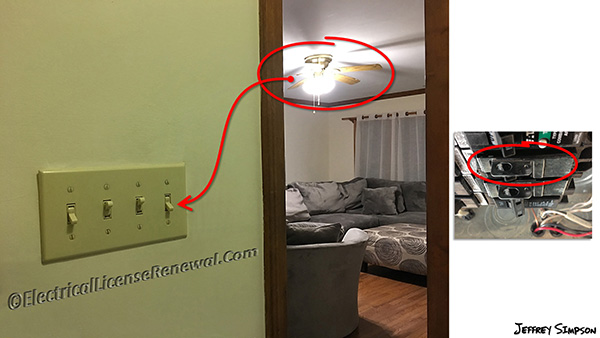422.31(A) Rated at Not over 300 Volt-Amperes or 1/8 Horsepower.

Code Change Summary: Requirements have changed for the disconnection of permanently connected appliances.
Section 422.30 requires a means to simultaneously disconnect each appliance from all ungrounded conductors in accordance with Part III of Article 422. There are several different types of acceptable disconnecting means permitted in Part III (depending on the appliance) which may include a unit switch with a marked “off” position, a horsepower rated snap switch, or even the branch circuit breaker.
Section 422.31 provides disconnection rules for three specific appliance installations that are permanently connected.
- Appliances rated at not over 300 volt-amperes (VA) or 1∕8 horsepower (HP).
- Appliances rated over 300 volt-amperes.
- Motor-operated appliances rated over 1∕8 horsepower.
Both A and C apply to motors while B does not, simply by the omission of any reference to horsepower in the title to Section 422.31(B). Appliances without a motor do not have a horsepower rating.
There has been much confusion as to whether the disconnecting means for a permanently connected appliance rated 300 VA or less or 1/8 HP or less must be located within sight of the appliance. In the 2014 NEC®, the basic rule allowed the branch-circuit overcurrent device to serve as the disconnecting means but there was no mention as to where it must be located.
In the 2017 NEC®, the rule is crystal clear; “The branch-circuit overcurrent device shall be permitted to serve as the disconnecting means where the switch or circuit breaker is within sight from the appliance or is lockable in accordance with 110.25”. “Within sight from the appliance” does not only mean that while flipping the switch, the electrician can see the appliance. It also means that while servicing the appliance, the switch can be seen by the electrician and it is within 50 feet.
This new language aligns with similar requirements in 422.31(B) for permanently connected non-motor appliances rated over 300 VA such as an electric water heater. If there is no disconnecting means within sight, then the circuit breaker must be lockable.
Below is a preview of the NEC®. See the actual NEC® text at NFPA.ORG for the complete code section. Once there, click on their link to free access to the 2017 NEC® edition of NFPA 70.
2014 Code Language:
422.31 Disconnection of Permanently Connected Appliances.
(A) Rated at Not over 300 Volt-Amperes or 1∕8 Horsepower. For permanently connected appliances rated at not over 300 volt-amperes or 1⁄8 hp, the branch-circuit overcurrent device shall be permitted to serve as the disconnecting means.
2017 Code Language:
422.31 Disconnection of Permanently Connected Appliances.
(A) Rated at Not over 300 Volt-Amperes or 1∕8 Horsepower. For permanently connected appliances rated at not over 300 volt-amperes or 1∕8 hp, the branch-circuit overcurrent device shall be permitted to serve as the disconnecting means where the switch or circuit breaker is within sight from the appliance or is lockable in accordance with 110.25.